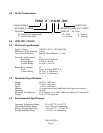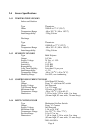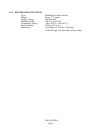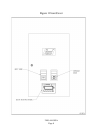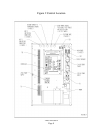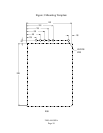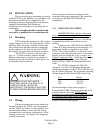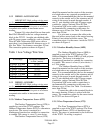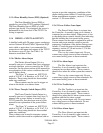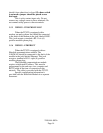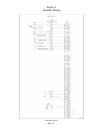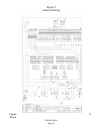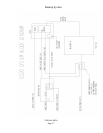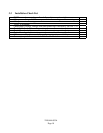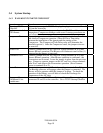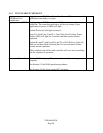2100-444-003A
Page 13
3.2.3.4 Zone Humidity Sensor (ZHS) (Optional)
The Zone Humidity Sensor (ZHS) is
supplied as part of the TCS22 package (Optional).
The Zone Humidity Sensor (ZHS) is a bulk
polymer type device. If so equipped, the sensor is
premounted to the front door of the TCS22. No
wiring is required.
3.2.4 WIRING – INPUTS & OUTPUTS
A shielded cable with 20 gauge copper conductors,
such as National Wire & Cable Corporation NQP
series cable or equivalent, is recommended for
connection to the inputs and outputs of the TCS22
for distances up to 45 feet. See Table 1 for
distances more than 45 feet.
3.2.4.1 Shelter Alarm Output
The Shelter Alarm Output (SA) is a
normally open set of contacts that closes whenever
an alarm condition exists as sensed by the TCS22
controller. See the alarm section of this manual for
an explanation of the various conditions that will
send a shelter alarm.
The Form "A" contacts are SPST N.O.
rated at 24 VAC, 5 A Resistive, or 24 VAC, 2 A
Inductive. These rating should not be exceeded
under any conditions.
These contacts may be used to trigger an
alarm in the shelter or a remote alarm.
3.2.4.2 Power Transfer Switch Output (PTS)
The Power Transfer Switch Output is a
normally open set of contacts that closes two (2)
minutes after a power failure is sensed by the
TCS22 controller. See the alarm section of this
manual for an explanation of the power failure
alarm.
The Form "A" contacts are SPST N.O.
rated at 24 VAC, 5 A Resistive, or 24 VAC, 2 A
Inductive. These rating should not be exceeded
under any conditions.
These contacts can be used to energize a power
transfer switch when used in conjunction with an
inverter to provide emergency ventilation of the
shelter during power failures. Consult the power
failure management sequence, section 4.2.10 and
section 1.3, for more details.
3.2.4.3 Power Failure Sense Input
The Power Failure Sense is an input into
the Controller. A normally open set of contacts is
connected across these inputs. When power is lost
to the shelter these contacts should close indicating
that the building has lost normal utility power.
These contacts can be used in conjunction with an
inverter and power transfer switch to provide
emergency ventilation of the shelter during power
failures. Consult the power failure management
sequence, section 4.2.10 and section 1.3, of this
manual for more details..
This is a dry contact input only. Do not
connect any voltage source to these terminals. Do
not connect utility power to these terminals.
3.2.4.4 Fire Alarm Input
The Fire Alarm is an input into the
Controller. A set of normally open contacts is
connected across these inputs. These contacts
should close when fire alarm system has sensed a
fire.
This is a dry contact input only. Do not
connect any voltage source to these terminals. Do
not connect utility power to these terminals.
3.2.4.5 Fire Trouble Input
The Fire Trouble is an input into the
Controller. A set of normally open contacts is
connected across these inputs. These contacts
should close when the fire alarm system senses a
problem with the fire alarm system.
This is a dry contact input only. Do not connect
any voltage source to these terminals. Do not
connect utility power to these terminals.
3.2.4.6 Door Alarm Input
The Door Alarm is an input into the
Controller. A set of normally open contacts is
connected across these inputs. These contacts



